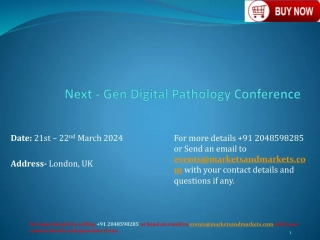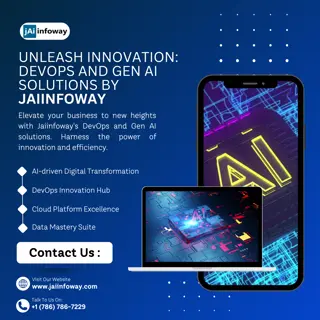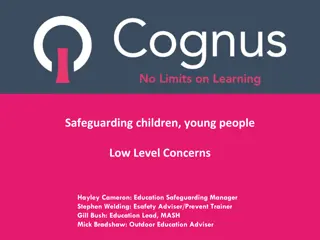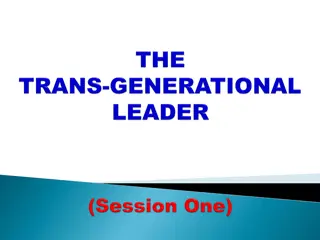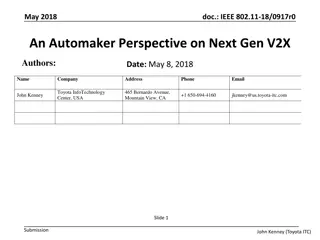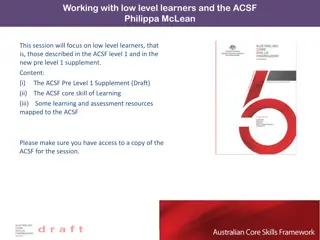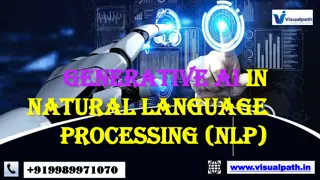Insights into Low-Level Shader Optimization for Next-Gen Technology
Delve into the world of low-level shader optimization for the next generation and DX11 with Emil Persson, Head of Research at Avalanche Studios. Uncover key lessons from the previous year, explore modern hardware developments, and grasp the intricacies of sampling a cubemap. Witness the evolution of hardware and the shift from fixed functions to ALU operations, vertex fetch, and more.
Download Presentation

Please find below an Image/Link to download the presentation.
The content on the website is provided AS IS for your information and personal use only. It may not be sold, licensed, or shared on other websites without obtaining consent from the author.If you encounter any issues during the download, it is possible that the publisher has removed the file from their server.
You are allowed to download the files provided on this website for personal or commercial use, subject to the condition that they are used lawfully. All files are the property of their respective owners.
The content on the website is provided AS IS for your information and personal use only. It may not be sold, licensed, or shared on other websites without obtaining consent from the author.
E N D
Presentation Transcript
Low-level Shader Optimization for Next-Gen and DX11 Emil Persson Head of Research, Avalanche Studios
Introduction Last year's talk Low-level Thinking in High-level Shading Languages Covered the basic shader features set Float ALU ops New since last year Next-gen consoles GCN-based GPUs DX11 feature set mainstream 70% on Steam have DX11 GPUs [1]
Main lessons from last year You get what you write! Don't rely on compiler optimizing for you Compiler can't change operation semantics Write code in MAD-form Separate scalar and vector work Also look inside functions Even built-in functions! Add parenthesis to parallelize work for VLIW
More lessons Put abs() and negation on input, saturate() on output rcp(), rsqrt(), sqrt(), exp2(), log2(), sin(), cos() map to HW Watch out for inverse trigonometry! Low-level and High-level optimizations are not mutually exclusive! Do both!
A look at modern hardware 7-8 years from last-gen to next-gen Lots of things have changed Old assumptions don't necessarily hold anymore Guess the instruction count! TextureCube Cube; SamplerState Samp; sample o0.xyzw, v0.xyzx, t0.xyzw, s0 float4 main(float3 tex_coord : TEXCOORD) : SV_Target { return Cube.Sample(Samp, tex_coord); }
Sampling a cubemap 15 VALU 1 transcendental shader main s_mov_b64 s_wqm_b64 exec, exec s_mov_b32 m0, s16 v_interp_p1_f32 v2, v0, attr0.x v_interp_p2_f32 v2, v1, attr0.x v_interp_p1_f32 v3, v0, attr0.y v_interp_p2_f32 v3, v1, attr0.y v_interp_p1_f32 v0, v0, attr0.z v_interp_p2_f32 v0, v1, attr0.z v_cubetc_f32 v1, v2, v3, v0 v_cubesc_f32 v4, v2, v3, v0 v_cubema_f32 v5, v2, v3, v0 v_cubeid_f32 v8, v2, v3, v0 v_rcp_f32 v2, abs(v5) s_mov_b32 s0, 0x3fc00000 v_mad_legacy_f32 v7, v1, v2, s0 v_mad_legacy_f32 v6, v4, v2, s0 image_sample v[0:3], v[6:9], s[4:11], s[12:15] dmask:0xf s_mov_b64 exec, s[2:3] s_waitcnt vmcnt(0) v_cvt_pkrtz_f16_f32 v0, v0, v1 v_cvt_pkrtz_f16_f32 v1, v2, v3 exp mrt0, v0, v0, v1, v1 done compr vm s_endpgm end s[2:3], exec 6 SALU 1 IMG 1 EXP
Hardware evolution Fixed function moving to ALU Interpolators Vertex fetch Export conversion Projection/Cubemap math Gradients Was ALU, became TEX, back to ALU (as swizzle + sub)
Hardware evolution Most of everything is backed by memory No constant registers Textures, sampler-states, buffers Unlimited resources Stateless compute
NULL shader AMD DX10 hardware float4 main(float4 tex_coord : TEXCOORD0) : SV_Target { return tex_coord; } 00 EXP_DONE: PIX0, R0 END_OF_PROGRAM
Not so NULL shader AMD DX11 hardware 00 ALU: ADDR(32) CNT(8) 0 x: INTERP_XY R1.x, R0.y, Param0.x VEC_210 y: INTERP_XY R1.y, R0.x, Param0.x VEC_210 z: INTERP_XY ____, R0.y, Param0.x VEC_210 w: INTERP_XY ____, R0.x, Param0.x VEC_210 1 x: INTERP_ZW ____, R0.y, Param0.x VEC_210 y: INTERP_ZW ____, R0.x, Param0.x VEC_210 z: INTERP_ZW R1.z, R0.y, Param0.x VEC_210 w: INTERP_ZW R1.w, R0.x, Param0.x VEC_210 01 EXP_DONE: PIX0, R1 END_OF_PROGRAM shader main s_mov_b32 m0, s2 v_interp_p1_f32 v2, v0, attr0.x v_interp_p2_f32 v2, v1, attr0.x v_interp_p1_f32 v3, v0, attr0.y v_interp_p2_f32 v3, v1, attr0.y v_interp_p1_f32 v4, v0, attr0.z v_interp_p2_f32 v4, v1, attr0.z v_interp_p1_f32 v0, v0, attr0.w v_interp_p2_f32 v0, v1, attr0.w v_cvt_pkrtz_f16_f32 v1, v2, v3 v_cvt_pkrtz_f16_f32 v0, v4, v0 exp mrt0, v1, v1, v0, v0 done compr vm s_endpgm end
Not so NULL shader anymore Set up parameter address and primitive mask shader main s_mov_b32 m0, s2 v_interp_p1_f32 v2, v0, attr0.x v_interp_p2_f32 v2, v1, attr0.x v_interp_p1_f32 v3, v0, attr0.y v_interp_p2_f32 v3, v1, attr0.y v_interp_p1_f32 v4, v0, attr0.z v_interp_p2_f32 v4, v1, attr0.z v_interp_p1_f32 v0, v0, attr0.w v_interp_p2_f32 v0, v1, attr0.w v_cvt_pkrtz_f16_f32 v1, v2, v3 v_cvt_pkrtz_f16_f32 v0, v4, v0 exp mrt0, v1, v1, v0, v0 done compr vm s_endpgm end Interpolate, 2 ALUs per float FP32 FP16 conversion, 1 ALU per 2 floats Export compressed color
NULL shader AMD DX11 hardware float4 main(float4 scr_pos : SV_Position) : SV_Target { return scr_pos; } 00 EXP_DONE: PIX0, R0 END_OF_PROGRAM exp mrt0, v2, v3, v4, v5 vm done s_endpgm
Shader inputs Shader gets a few freebees from the scheduler VS Vertex Index PS Barycentric coordinates, SV_Position CS Thread and group IDs Not the same as earlier hardware Not the same as APIs pretend Anything else must be fetched or computed
Shader inputs There is no such thing as a VertexDeclaration Vertex data manually fetched by VS Driver patches shader when VDecl changes float4 main(uint id: SV_VertexID) : SV_Position { return asfloat(id); } float4 main(float4 tc: TC) : SV_Position { return tc; } v_mov_b32 v1, 1.0 exp pos0, v0, v0, v0, v0 done exp param0, v1, v1, v1, v1 s_swappc_b64 s[0:1], s[0:1] v_mov_b32 v0, 1.0 exp pos0, v4, v5, v6, v7 done exp param0, v0, v0, v0, v0 Sub-routine call
Shader inputs Up to 16 user SGPRs The primary communication path from driver to shader Shader Resource Descriptors take 4-8 SGPRs Not a lot of resources fit by default Typically shader needs to load from a table
Shader inputs Texture Descriptor is 8 SGPRs Resource desc list return T0.Load(0); return T0.Load(0) * T1.Load(0); v_mov_b32 v0, 0 v_mov_b32 v1, 0 v_mov_b32 v2, 0 image_load_mip v[0:3], v[0:3], s[4:11] s_load_dwordx8 s[4:11], s[2:3], 0x00 s_load_dwordx8 s[12:19], s[2:3], 0x08 v_mov_b32 v0, 0 v_mov_b32 v1, 0 v_mov_b32 v2, 0 s_waitcnt lgkmcnt(0) image_load_mip v[3:6], v[0:3], s[4:11] image_load_mip v[7:10], v[0:3], s[12:19] Raw resource desc Explicitly fetch resource descs
Shader inputs Interpolation costs two ALU per float Packing does nothing on GCN Use nointerpolation on constant values A single ALU per float SV_Position Comes preloaded, no interpolation required noperspective Still two ALU, but can save a component
Interpolation Using nointerpolation float4 main(float4 tc: TC) : SV_Target { return tc; } float4 main(nointerpolation float4 tc: TC) : SV_Target { return tc; } v_interp_p1_f32 v2, v0, attr0.x v_interp_p2_f32 v2, v1, attr0.x v_interp_p1_f32 v3, v0, attr0.y v_interp_p2_f32 v3, v1, attr0.y v_interp_p1_f32 v4, v0, attr0.z v_interp_p2_f32 v4, v1, attr0.z v_interp_p1_f32 v0, v0, attr0.w v_interp_p2_f32 v0, v1, attr0.w v_interp_mov_f32 v0, p0, attr0.x v_interp_mov_f32 v1, p0, attr0.y v_interp_mov_f32 v2, p0, attr0.z v_interp_mov_f32 v3, p0, attr0.w
Shader inputs SV_IsFrontFace comes as 0 or 0xFFFFFFFF return (face? 0xFFFFFFFF : 0) is a NOP Or declare as uint (despite what documentation says) Typically used to flip normals for backside lighting float flip = face? 1.0f : -1.0f; return normal * flip; return face? normal : -normal; return asfloat( BitFieldInsert(face, asuint(normal), asuint(-normal)) ); v_cmp_ne_i32 vcc, 0, v2 v_cndmask_b32 v0, -1.0, 1.0, vcc v_mul_f32 v1, v0, v1 v_mul_f32 v2, v0, v2 v_mul_f32 v0, v0, v3 v_cmp_ne_i32 vcc, 0, v2 v_cndmask_b32 v0, -v0, v0, vcc v_cndmask_b32 v1, -v1, v1, vcc v_cndmask_b32 v2, -v3, v3, vcc v_bfi_b32 v0, v2, v0, -v0 v_bfi_b32 v1, v2, v1, -v1 v_bfi_b32 v2, v2, v3, -v3
GCN instructions Instructions limited to 32 or 64bits Can only read one scalar reg or one literal constant Special inline constants 0.5f, 1.0f, 2.0f, 4.0f, -0.5f, -1.0f, -2.0f, -4.0f -64..64 Special output multiplier values 0.5, 2.0, 4.0 Underused by compilers (fxc also needlessly interferes)
GCN instructions GCN is scalar (i.e. not VLIW or vector) Operates on individual floats/ints Don't confuse with GCN's scalar/vector instruction! Wavefront of 64 threads Those 64 scalars make a SIMD vector which is what vector instructions work on Additional scalar unit on the side Independent execution Loads constants, does control flow etc.
GCN instructions Full rate Float add/sub/mul/mad/fma Integer add/sub/mul24/mad24/logic Type conversion, floor()/ceil()/round() rate Double add
GCN instructions rate Transcendentals (rcp(), rsq(), sqrt(), etc.) Double mul/fma Integer 32-bit multiply For free (in some sense) Scalar operations
GCN instructions Super expensive Integer divides Unsigned integer somewhat less horrible Inverse trigonometry Caution: Instruction count not indicative of performance anymore
GCN instructions Sometimes MAD becomes two vector instructions return (x + 3.0f) * 1.5f; return x * 1.5f + 4.5f; return x * c.x + c.y; v_add_f32 v0, 0x40400000, v0 v_mul_f32 v0, 0x3fc00000, v0 s_mov_b32 s0, 0x3fc00000 v_mul_f32 v0, s0, v0 s_mov_b32 s0, 0x40900000 v_add_f32 v0, s0, v0 v_mov_b32 v1, s1 v_mac_f32 v1, s0, v0 v_mov_b32 v1, 0x40900000 s_mov_b32 s0, 0x3fc00000 v_mac_f32 v1, s0, v0 So writing in MAD-form is obsolete now? Nope
GCN instructions MAD-form still usually beneficial When none of the instruction limitations apply When using inline constants (1.0f, 2.0f, 0.5f etc) When input is a vector
GCN instructions MAD ADD-MUL Single immediate constant return (x + y) * 3.0f; return x * 3.0f + y; v_add_f32 v0, v2, v0 v_mul_f32 v0, 0x40400000, v0 v_madmk_f32 v0, v2, 0x40400000, v0 Inline constant return (x + 3.0f) * 0.5f; return x * 0.5f + 1.5f; v_add_f32 v0, 0x40400000, v0 v_mul_f32 v0, 0.5, v0 v_madak_f32 v0, 0.5, v0, 0x3fc00000 s_mov_b32 s0, 0x3fc00000 v_add_f32 v0, v0, s0 div:2
GCN instructions MAD ADD-MUL Vector operation return (v4 + c.x) * c.y; return v4 * c.x + c.y; v_add_f32 v1, s0, v2 v_add_f32 v2, s0, v3 v_add_f32 v3, s0, v4 v_add_f32 v0, s0, v0 v_mul_f32 v1, s1, v1 v_mul_f32 v2, s1, v2 v_mul_f32 v3, s1, v3 v_mul_f32 v0, s1, v0 v_mov_b32 v1, s1 v_mad_f32 v2, v2, s0, v1 v_mad_f32 v3, v3, s0, v1 v_mad_f32 v4, v4, s0, v1 v_mac_f32 v1, s0, v0
Vectorization Scalar code Vectorized code return 1.0f dot(v.xy, v.xy); return 1.0f - v.x * v.x - v.y * v.y; v_mad_f32 v2, -v2, v2, 1.0 v_mad_f32 v2, -v0, v0, v2 v_mul_f32 v2, v2, v2 v_mac_f32 v2, v0, v0 v_sub_f32 v0, 1.0, v2
ROPs HD7970 264GB/s BW, 32 ROPs RGBA8: 925MHz * 32 * 4 bytes = 118GB/s (ROP bound) RGBA16F: 925MHz * 32 * 8 bytes = 236GB/s (ROP bound) RGBA32F: 925MHz * 32 * 16 bytes = 473GB/s (BW bound) PS4 176GB/s BW, 32 ROPs RGBA8: 800MHz * 32 * 4 bytes = 102GB/s (ROP bound) RGBA16F: 800MHz * 32 * 8 bytes = 204GB/s (BW bound)
ROPs XB1 16 ROPs ESRAM: 109GB/s (write) BW DDR3: 68GB/s BW RGBA8: 853MHz * 16 * 4 bytes = 54GB/s (ROP bound) RGBA16F: 853MHz * 16 * 8 bytes = 109GB/s (ROP/BW) RGBA32F: 853MHz * 16 * 16 bytes = 218GB/s (BW bound)
ROPs Not enough ROPs to utilize all BW! Always for RGBA8 Often for RGBA16F Bypass ROPs with compute shader Write straight to a UAV texture or buffer Done right, you'll be BW bound We have seen 60-70% BW utilization improvements
Branching Branching managed by scalar unit Execution is controlled by a 64bit mask in scalar regs Does not count towards you vector instruction count Branchy code tends to increase GPRs x? a : b Semantically a branch, typically optimized to CndMask Can use explicit CndMask()
Integer mul24() Inputs in 24bit, result full 32bit Get the upper 16 bits of 48bit result with mul24_hi() 4x speed over 32bit mul Also has a 24-bit mad No 32bit counterpart The addition part is full 32bit
24bit multiply mul32 mul24 return i * j; return mul24(i, j); 4 cycles 1 cycle v_mul_lo_u32 v0, v0, v1 v_mul_u32_u24 v0, v0, v1 mad32 mad24 return i * j + k; return mul24(i, j) + k; 5 cycles 1 cycle v_mul_lo_u32 v0, v0, v1 v_add_i32 v0, vcc, v0, v2 v_mad_u32_u24 v0, v0, v1, v2
Integer division Not natively supported by HW Compiler does some obvious optimizations i / 4 => i >> 2 Also some less obvious optimizations [2] i / 3 => mul_hi(i, 0xAAAAAAB) >> 1 General case emulated with loads of instructions ~40 cycles for unsigned ~48 cycles for signed
Integer division Stick to unsigned if possible Helps with divide by non-POT constant too Implement your own mul24-variant i / 3 mul24(i, 0xAAAB) >> 17 Works with i in [0, 32767*3+2] Consider converting to float Can do with 8 cycles including conversions Special case, doesn't always work
Doubles Do you actually need doubles? My professional career's entire list of use of doubles: Mandelbrot Quick hacks Debug code to check if precision is the issue
Doubles Use FMA if possible Same idea as with MAD/FMA on floats No double equivalent to float MAD No direct support for division Also true for floats, but x * rcp(y) done by compiler 0.5 ULP division possible, but far more expensive Double a / b very expensive Explicit x * rcp(y) is cheaper (but still not cheap)
Packing Built-in functions for packing f32tof16() f16tof32() Hardware has bit-field manipulation instructions Fast unpack of arbitrarily packed bits int r = s & 0x1F; int g = (s >> 5) & 0x3F; int b = (s >> 11) & 0x1F; // 1 cycle // 1 cycle // 1 cycle
Float Prefer conditional assignment sign() - Horribly poorly implemented step() - Confusing code and suboptimal for typical case Special hardware features min3(), max3(), med3() Useful for faster reductions General clamp: med3(x, min_val, max_val)
Texturing SamplerStates are data Must be fetched by shader Prefer Load() over Sample() Reuse sampler states Old-school texture sampler-state link suboptimal
Texturing Cubemapping Adds a bunch of ALU operations Skybox with cubemap vs. six 2D textures Sample offsets Load(tc, offset) bad Consider using Gather() Sample(tc, offset) fine
Registers The number of registers affects latency hiding Fewer is better Keep register life-time low for (each){ WorkA(); } for (each){ WorkB(); } is better than: for (each){ WorkA(); WorkB(); } Don't just sample and output an alpha just because you have one available
Registers Consider using specialized shaders #ifdef instead of branching ber-shaders pay for the worst case Reduce branch nesting
Things shader authors should stop doing pow(color, 2.2f) You almost certainly did something wrong This is NOT sRGB! normal = Normal.Sample(...) * 2.0f 1.0f; Use signed texture format instead
Things compilers should stop doing x * 2 => x + x Makes absolutely no sense, confuses optimizer saturate(a * a) => min(a * a, 1.0f) This is a pessimization x * 4 + x => x * 5 This is a pessimization (x << 2) + x => x * 5 Dafuq is wrong with you?
Things compilers should stop doing asfloat(0x7FFFFF) => 0 This is a bug. It's a cast. Even if it was a MOV it should still preserve all bits and not flush denorms. Spend awful lots of time trying to unroll loops with [loop] tag I don't even understand this one Treat vectors as anything else than a collection of floats
Things compilers should be doing x * 5 => (x << 2) + x Use mul24() when possible Compiler for HD6xxx detects some cases, not for GCN Expose more hardware features as intrinsics More and better semantics in the D3D bytecode Require type conversions to be explicit
Potential extensions Hardware has many unexplored features Cross-thread communication Programmable branching Virtual functions Goto



